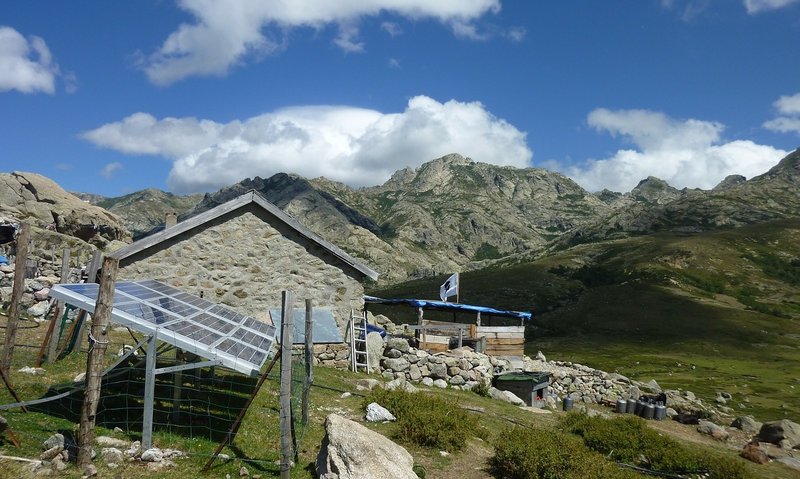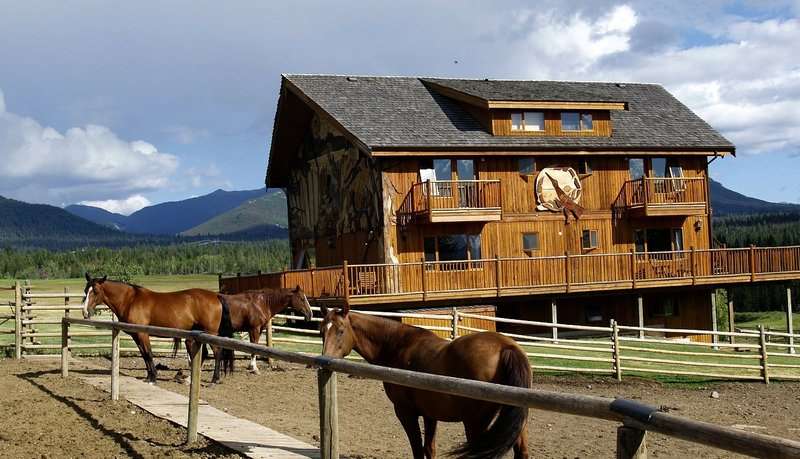
Building a green house is not so difficult as it sounds, especially if you keep the principles below, in mind.
What do you think of, when you think of green building? Does your imagination conjure up visions of homes made of old tires, used beer cans, bales of straw or bricks made of clay?

Of course a sustainable home can be made from recycled materials, but it also can be quite fashionable and attractive.
And when building a green house, you can use renewable resources like wood and other natural materials. Beautiful construction materials that bring the excitement of Nature, right into your home!
And, did you know that log homes and timber homes use green building materials?
However, to have a totally sustainable home, you will, of course, also have to consider more than just the shell of the home. And there are some disadvantages that you might want to consider, as well.
A green house can look like any other home in the neighborhood, on the outside. When building a green house, you don’t have to sacrifice beauty nor do you have to have a house that looks radically different to others.
Building a Sustainable House
So, you are environmentally aware and would like to do your share to save the environment. When building a green house, what are the principles that you need to keep in mind?
Location of Your Home
Conserving energy and positioning your home on your lot will be different for people who live in Florida vs. people who live in Michigan.
In Florida, for example, you would keep windows on the south to a minimum, to minimize heat gain and keep the home cool.
However, in Michigan you would have few windows to the north and more insulated windows to the south. This is to maximize heat gain in the winter and minimize heat loss through the northern windows.
Keep this in mind when you choose your house plans for building a green house.
Orientation of Your New Home
Position your home on the lot to get the most benefit from passive solar heat gain or cooling shade.
Traditionally we have always lined houses up in a row on a street. But common sense says that each house has its own best orientation on its own individual lot.
Go for the practical, instead of placing your house parallel to the street.
Your house doesn’t have to look dorky and out of place. Use creative landscaping to make it especially appealing.
Energy Efficiency
As energy becomes more expensive and there is a dwindling supply, it just makes sense to use energy efficient products and appliances.
When building a green house, you may choose to incorporate passive solar heat, solar water heating or wind generated electricity into your log home design.
Universal Design
Planning for the future when you are building a green house, makes sense.
It’s easy and inexpensive to incorporate disability features when you build your house.
Later, if one of you have an injury or require a walker or wheelchair, it’s far more expensive to remodel your home and make adaptive changes.
Including these features can make the difference between staying in your home longer, and having to go into an assisted living facility.
The Size of Your House
Smaller homes cost less, use fewer building materials and use less energy and fuel to run. They make a smaller impact on the environment, as well.
So why build a huge McMansion, with multiple rooms that you never use?
Instead, build a smaller high quality home where you use the space efficiently, and you will be cozier and more comfortable, and use much less energy!
Besides, who wants to clean all those unused rooms (or pay someone else to do it)?
Green Building Materials
If you do your homework for eco green living, you’ll learn which building materials are less wasteful of natural resources, which ones are renewable, and which ones are less likely to make your family ill.
Chemicals can irritate your family’s allergies. Take an active part in choosing products for your new home, and your family will be healthier.
Air Quality in Your Home
You probably don’t usually think of air inside your home as being polluted. But, believe it or not, the air inside your home can be 2-5 times more polluted than the air outside your home.
And that includes homes in areas that we consider to have polluted outside air.
Choose building materials and construction techniques that don’t have dangerous off-gases and that are safe and natural.
This will go a long way toward keeping your family healthy in their new home.
Curb Appeal
Yes visual appeal still counts. You want your new home to fit in with others in the neighborhood. So, if you live in Alaska, your new home shouldn’t look like it belongs in southern Florida. And vice versa.
Look around and see what is traditional for the homes near your lot, and build a home that looks good and fits in with the neighborhood!




